Shopoff Realty Investments has a 30-plus year track record of transforming underutilized, undervalued real estate. These days, the firm is busy buying distressed retail properties and redeveloping them into residential units, often with a bit of retail. The strategy addresses California’s housing shortage and returns the properties to vibrancy.
It has four retail-to-housing projects going right now, and president and CEO Bill Shopoff believes there’s significant runway for such redevelopments. Commerce + Communities Today contributing editor Beth Mattson-Teig talked with him about analyzing the viability of projects and overcoming challenges, as well as the continuing opportunities for similar developments.
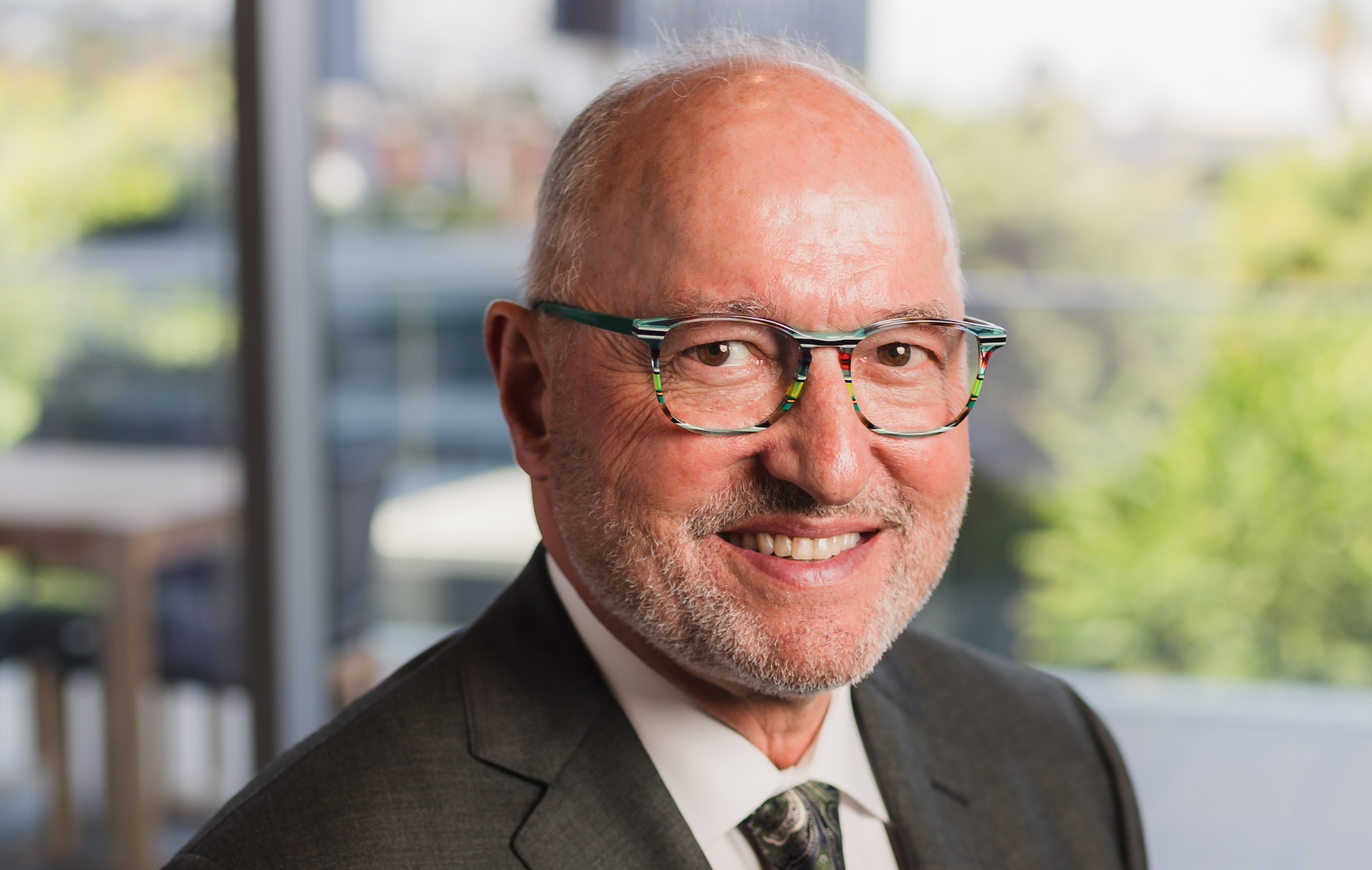
Bill Shopoff
Can you talk about your firm’s track record of redeveloping retail properties?
We’ve redeveloped shopping centers historically as shopping centers. In terms of redeveloping them for something else, we’ve been involved in several to date and fully completed one in Fullerton, California. We bought a neighborhood, formerly grocery-anchored shopping center situated on about 10 acres. We went through the city process and got an approval to build 113 homes for sale and then kept a portion of the site for existing retail and about 10,0000 to 15,000 square feet of new-construction retail. We’re taking the old that didn’t work, reimagining it, adding new customers adjacent and keeping the hard corner that was functional where we had fast-food, coffee and other kinds of uses. We moved a veterinarian clinic that was in-line into a freestanding building, and then we successfully sold the hard retail corner. We’ve sold the residential development land to Lennar Homes, and we have a couple of pads left that are under contract and will be sold later this year when some physical work is done on them.
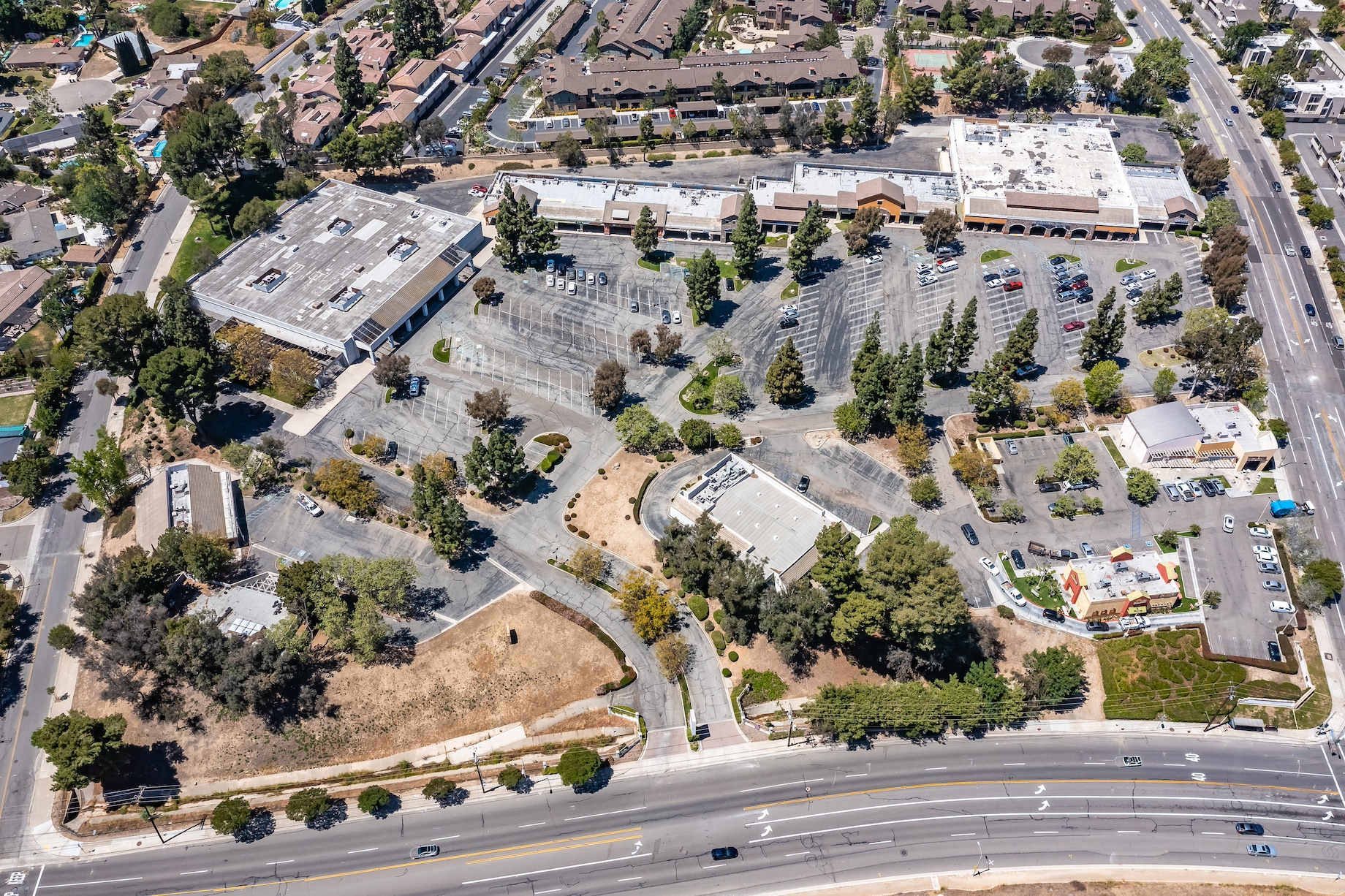
The Pines at Fullerton before … In January 2023, Shopoff Realty Investments received unanimous approval from the city of Fullerton, California, to redevelop this 14-acre property with an aging shopping center.
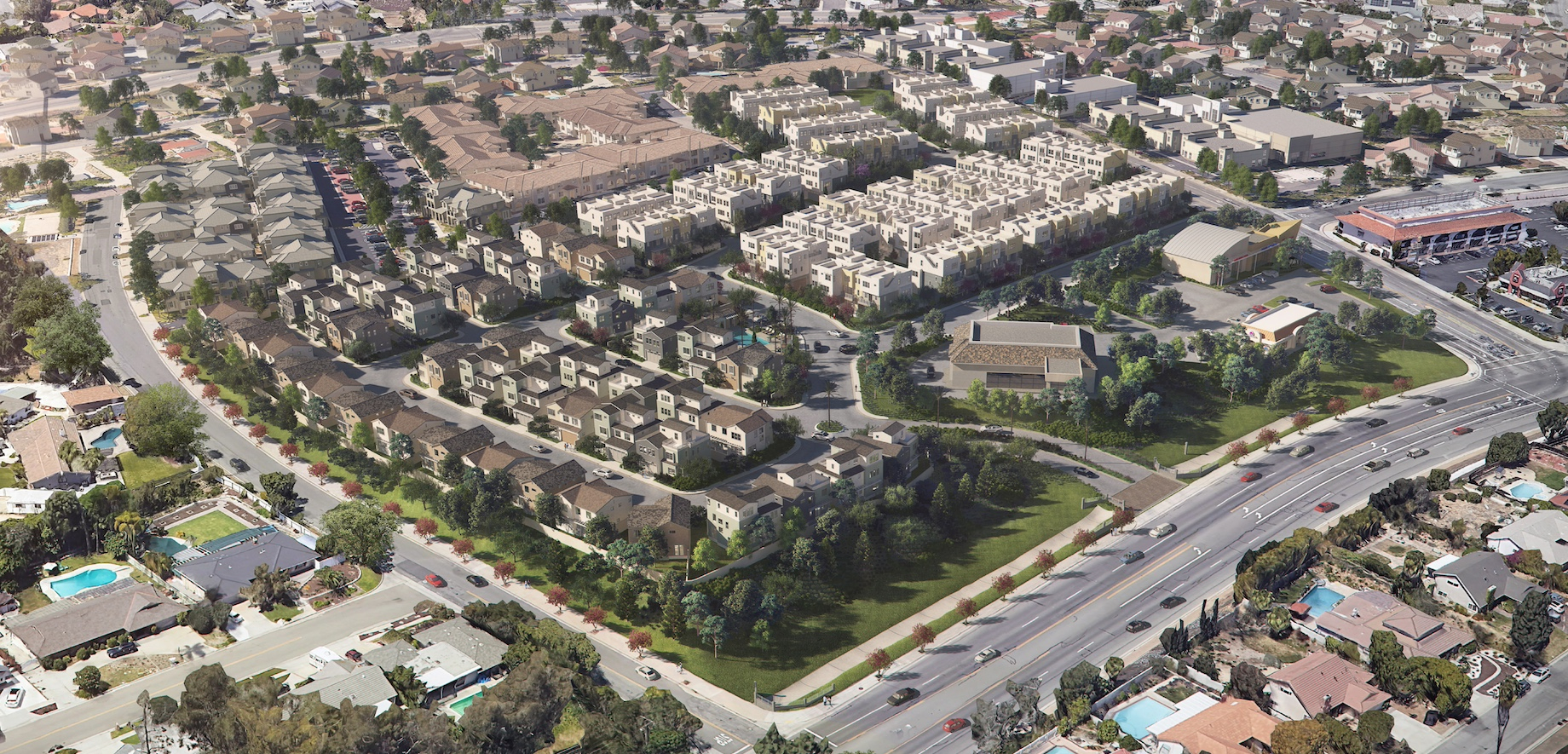
Later in 2023, Shopoff sold the land approved for 49 small-lot detached homes and 64 townhomes to Lennar, which will develop The Pines at Fullerton. Zoning also allows for 23,000 square feet of neighborhood retail. Shopoff has sold the corner retail space, including a drive-thru Del Taco and three retail pads, and a few more are under contract for sale.
We have three others that we’re in process on. We own a Sears and a Macy’s anchor store as part of the Westminster Mall in Orange County, California. The city has approved the zoning to do a combination of apartments and for-sale housing along with a bit of retail. We’re tearing down the two stores, and we would add about 1,000 units of multifamily, a little over 100 units for-sale and about 25,000 square feet of retail focused more on food. We think that retail is more experiential and food based today rather than people showing up and buying the things that you could buy online.
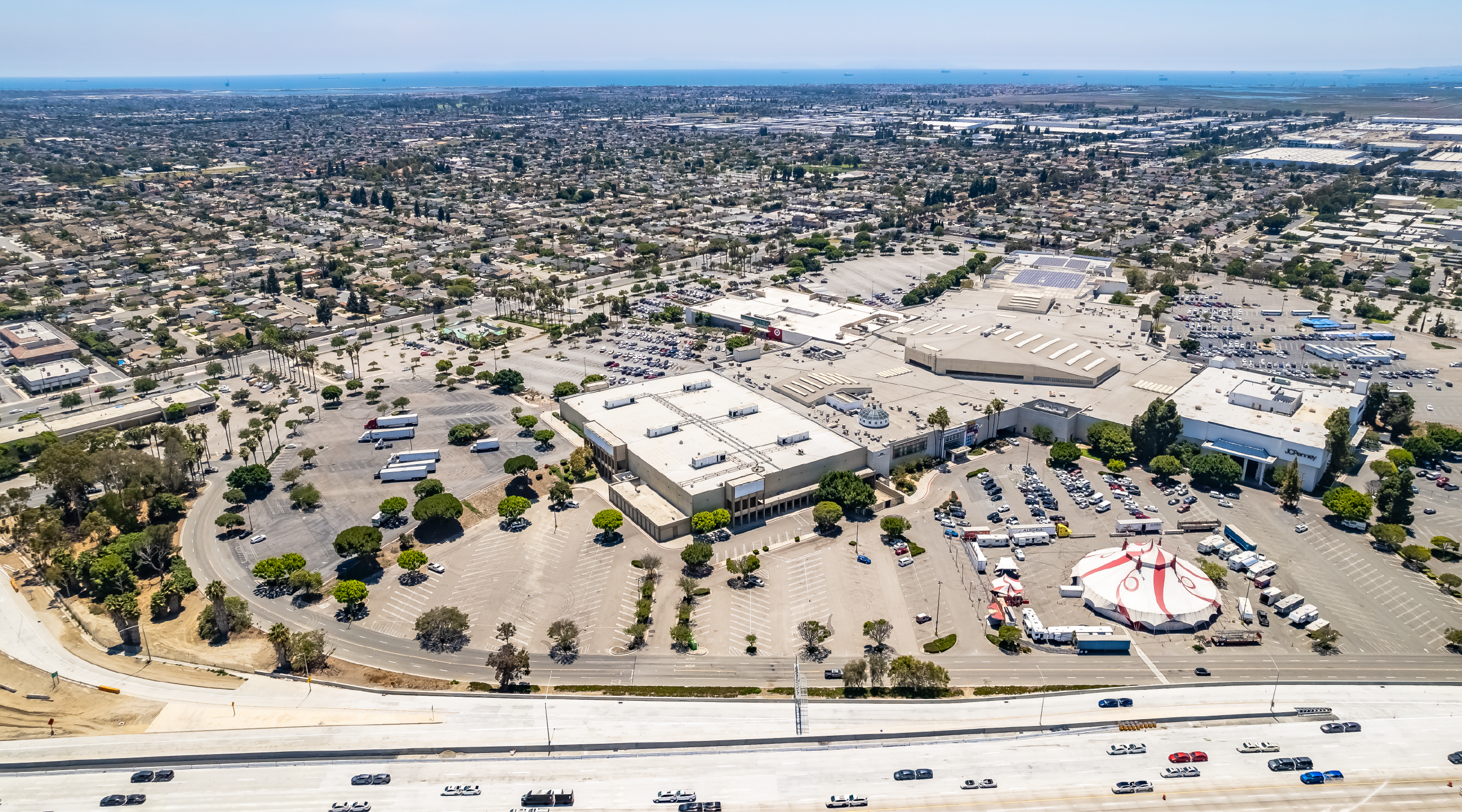
The city of Westminster, California, has granted zoning approval that will enable Shopoff Realty Investments to redevelop Westminster Mall’s former Macy’s and Sears stores.
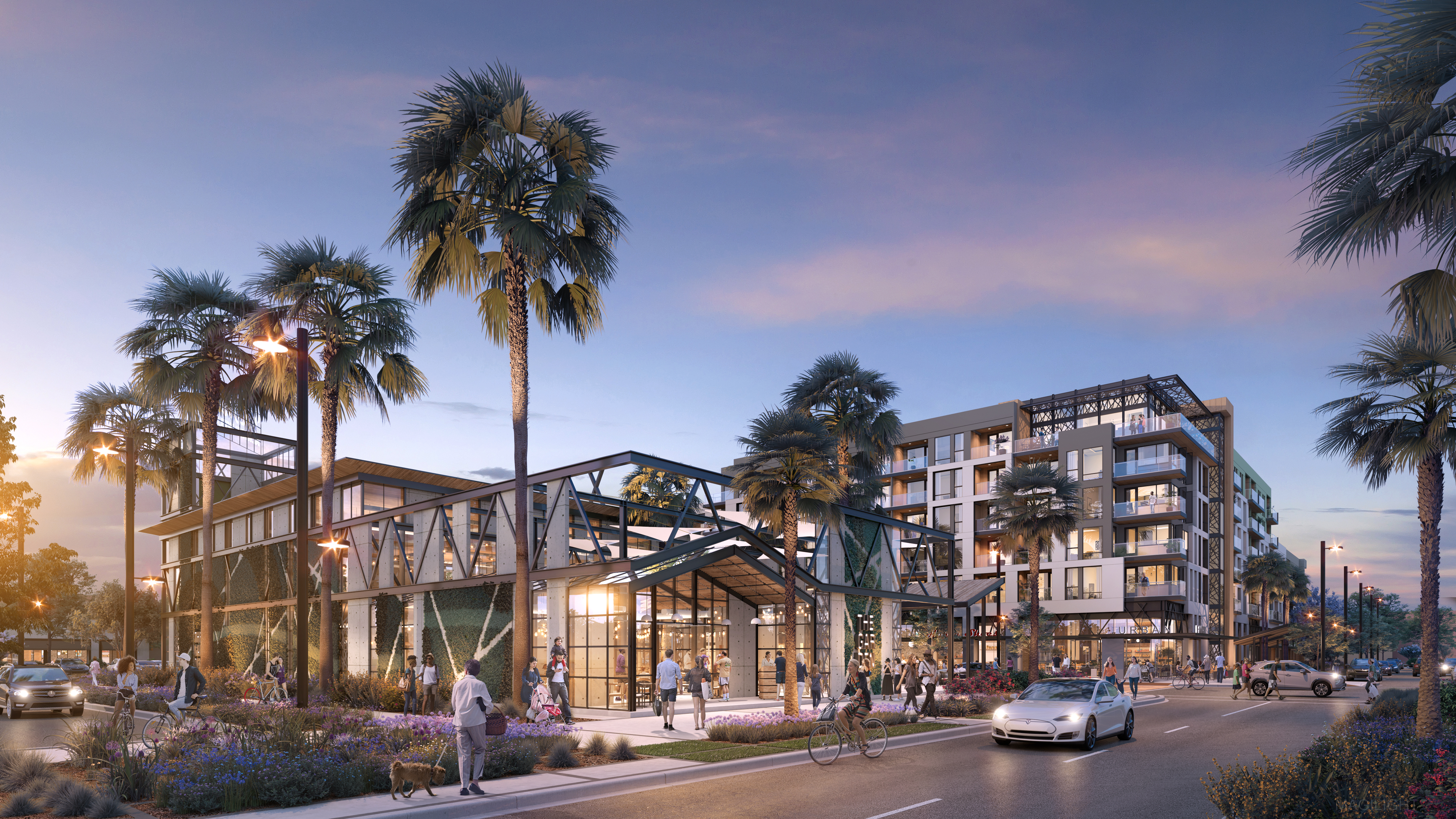
Shopoff plans 1,000 multifamily units, 100 for-sale homes and 25,000-square feet of new retail.
So with those anchor stores, do you own the rest of the property, or do you have to work with the existing retail center owner there?
We have to work through the reciprocal easement agreements, the REAs, with the other owners. We’re in the process of negotiating those, and we think something will be resolved on those. I’m not going to speak to specifics, but yes, we have to work through the cross easements and uses with other ownership. I think we have come up with some good strategies to do that, but that is a big obstacle. The good news is that they’re aligned in our thinking — not necessarily in exactly the execution, but they’re aligned in our thinking.
There is a lot of talk about stress from loan maturities ahead. What opportunities do you expect for buying retail properties to redevelop as residential?
Retail is weathering the storm better than people probably thought — certainly better than I thought — but there’s still an ample supply of new opportunities coming. Retail is still overbuilt or, as I like to say, it’s just under-demolished. I would say the same thing about some office stock. Good retail is going to thrive, and bad retail is going to do poorly. To the extent that poor retail gets eliminated from the market supply, it’s going to raise the boats of good retail. So, I think there’s a double win for the communities that support this work that we’re doing. The centers that remain are more vibrant, and what they also get is another more vibrant redevelopment adding to their tax base.
We’ve been talking about distressed retail for more than a decade, and we’ve seen a lot of stories about repurposing and redeveloping retail. On the flip side, retail vacancies are now pretty tight. Is the window of opportunity closing?
There’s still plenty of opportunity. In the last 60 days, we have seen announcements that Macy’s is closing more stores and Outback Steakhouse is closing some restaurants, and there also are new stores opening. I think the shift in the market is still going to provide plenty of opportunity for us to solve problems.
Are you concentrating on California?
We’re mostly focused on Southern California, but we will go all over the state. We own a Nordstrom in Pleasanton, California, for example, so we’re comfortable going out of our direct region, but we don’t think the opportunities are right for us outside of California. Land is maybe not as scarce, and the value proposition may not be there yet. We looked at buying a JCPenney in Austin, where I did think there was high value to it, so we’re not excluding it, but it’s not the primary target of our pursuits today. We feel that there’s plenty of work to do in California.
Are you focusing on empty anchor boxes, or are you looking at other retail assets?
We would love to do more of a neighborhood center where we could control the whole center and then we could solve the REA issue, but it’s impossible to find a center that is completely vacant. The issue there is having to deal with existing tenancies and deal with relocation, and candidly, that’s a lot harder in the retail world than in the office world. Most people are indifferent to where they go to the office, especially if a building is not thriving. Retailers think that where they are is often specific to their business and it’s tougher to get people to move, so you’ve got to price in incentivizing them at a greater level. That impacts your land basis and what you can pay for something.
Any other current projects you can share?
We’re redeveloping in Santa Barbara a former Nordstrom store that will probably be a little bit different because I think we will keep the existing building and turn it into housing. We plan to add either condominiums or apartments and maybe a little bit of retail. Most of the other examples I’ve talked about are tearing down the building or partially repurposing. I think some people are looking for a cookie-cutter solution, and this is not a cookie-cutter solution. Every deal is a little bit different.
How do you evaluate the feasibility of a redevelopment to residential? I imagine cost basis is a big part of it, but what else do you really need to make these projects work?
You have to have a city where you’ve got a pathway forward to success. That’s a pretty big piece of it. Do I have a way to get zoning changes? The state of California has helped me with that because there are some rules and new laws that I can use to enhance my entitlement processing. For example, California has a bill called AB 2011. If I have a major roadway retitling as part of redeveloping a retail center, I can take that through using AB 2011 and I have a very direct pathway that the cities really can’t object to. That’s one of the tools that we’re using today. Otherwise, it might just be talking to a city and saying: “You’ve got a housing shortage. We’ve got land where we can do high-density housing. Are you amenable to that?” In our Pleasanton project, before we closed, the city redid their housing element and put zoning on the center and provided a certain density that we could allocate amongst the owners.
Are there any other must-haves for these retail-to-residential redevelopments to work?
Obviously, you want to have a good physical site that will work. You do have to look at utilities and ingress and egress, but generally traffic from the residential project is going to be almost certainly less than the historical traffic of a successful retail center. But we check all those boxes before we acquire something. We do a fairly significant amount of pre-acquisition due diligence.
What are the biggest obstacles to making these projects work? Is it cost? Is it not having a pathway with a city? Other issues?
There’s a reason why people aren’t getting this done as frequently as they would like to. It’s difficult, and there are a lot of nuances to it. You’ve got to deal with tenancy. You’ve got to deal with these easement agreements. Then you’ve got to deal with city governments. Each of those individually is challenging, and then when you put them all together, it’s too much work for some people. It’s very much what your entry point is that’s going to decide whether you’re going to be successful or not. It’s often said that you make your money on the buy, and that’s a big part of it. If you don’t buy it right, it’s really hard to fix the problem.